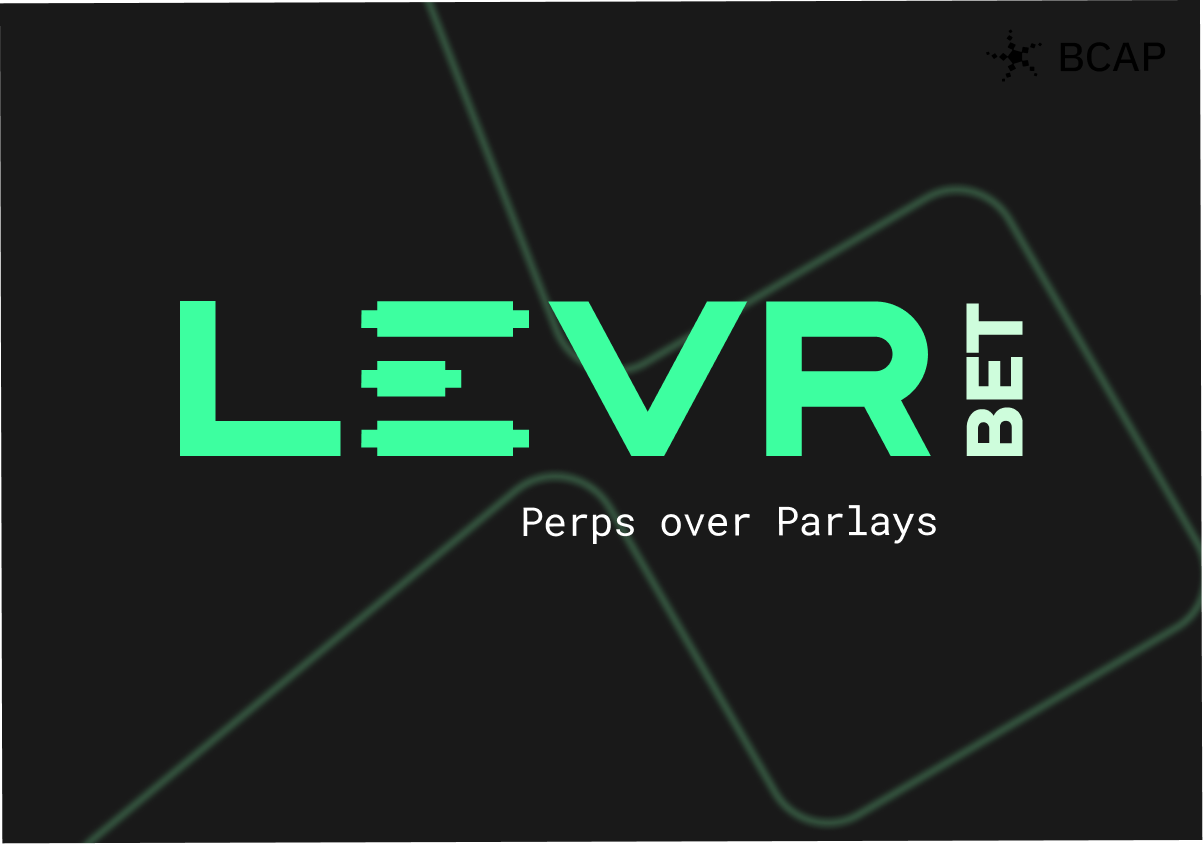
The Dawn of a New Era in Cryptography with Fabric's Innovative VPU Technology
One of the most important characteristics of cryptography, crypto, and blockchains is their potential to replace traditional governance systems—from laws and institutions to regulations and bureaucracy—with code. This is our industry’s grand vision and the future that Blockchain Capital has helped build for over a decade.
Now, Fabric Cryptography is about to reveal a groundbreaking advancement that could alter the field of cryptography forever.
While our industry has come a long way, a lot more work remains. Society increasingly recognizes that traditional institutions and digital systems can no longer be trusted, but to move beyond trust and to hold these institutions to account, society needs to be able to verify things. However, ways of incorporating verifiability into our institutions and digital systems are still prohibitively slow and expensive, today.
Moreover, society is also increasingly recognizing that traditional guarantees around privacy and confidentiality have eroded as we entered the digital age. However, the fact of the matter is that many also cannot live without the conveniences that come with trusting institutions and large corporations with our data. Adding privacy and confidentiality back to our lives is also prohibitively slow and expensive, today.
While cryptographic techniques and technologies enabling verifiability, privacy, and confidentiality—namely ZK and FHE (zero-knowledge proofs and fully-homomorphic encryption)—are now more accessible and performant than ever, they are still orders of magnitudes too slow and expensive for commercialized use in real world applications outside of the crypto industry
This is a massive problem and solving it unlocks myriad possibilities:
- Scaling blockchains horizontally to billions of people globally without compromising on its core property—empowering anyone to verify the chain without placing trust in centralized operators
- Personal privacy and online self-sovereignty—individuals can provide verifiable details about their identity and financial information without ever revealing the data itself
- Large language models and other AI systems can constantly improve without users having to give centralized companies access to their raw personal data. Instead, users can hand over their data in encrypted form
- Storing personal data in an encrypted way, rather than in plaintext, also then provides the framework to eliminate data leaks once and for all
So, how can we engineer the phase shift for ZK and FHE to be used everywhere?
There are two main ways of improving speed and cost here: we can continue to make new theoretical discoveries and implement theory more efficiently, or we can turn to hardware acceleration.
On the theory and implementation front, theoretical advancements in ZK and FHE and discoveries of more efficient implementations by cryptographers and software engineers have already driven costs down by many orders of magnitude over the last 5 years.
However, what is yet untapped is the exponential potential afforded by custom hardware acceleration, which we believe has the potential to deliver similar orders of magnitude improvements over the coming years. Just as AI needed GPUs to go mainstream, cryptography needs its hardware moment.
This is where Fabric comes in.
There are multiple approaches we can take to accelerate zero-knowledge proofs and fully homomorphic encryption schemes using hardware. One option would be to better utilize today’s processors like GPUs or FPGAs.
However, GPUs were built for graphics and artificial intelligence, and this purpose does not have much overlap with the requirements of the workloads of cryptography. This means that the arithmetic logic units of GPUs, built to focus on floating point arithmetic, are used incredibly inefficiently when doing cryptography. Similarly, although FPGAs can be programmed to perform cryptography more efficiently, they run too slowly relative to GPUs, are much more difficult to program, and cannot easily be racked up in server settings.
The much more effective approach would be to develop new custom hardware. One way to do this would be to build ASICs, like those used in Bitcoin mining today. However, since new, more efficient ZK proof systems are released every few months, any ASIC hardware tailored to accelerate an older proof system will also become outdated every few months. This is the core issue with this approach; shipping an ASIC that will only be usable for 2-3 months is obviously terrible business.
The logical conclusion, while incredibly ambitious, is to design a whole new type of general purpose processor. Fabric was founded to do exactly this. They pioneered a revolutionary concept in the field of cryptography that breaks the tradeoff of programmability and performance that plagues existing processors.
Later this year, Fabric is shipping a new type of processor that is as programmable as a GPU but as performant as ASICs—the Verifiable Processing Unit (VPU).

Before NVIDIA’s GPUs and CUDA software model—which allowed AI engineers to program GPUs to accelerate the last decade’s rapid advancements in AI—neural networks, invented in the 1930s, were an academic fascination with limited to no real world adoption. But in the past decade, Nvidia has 1,000,000x-ed AI compute, making ChatGPT, Dall-E, and Sora available to everyone. We believe Fabric’s VPUs and upcoming software libraries will similarly undergird this decade’s rapid advancements in and commercialization of cryptography across the crypto industry and beyond
Put simply, Fabric will be to cryptography what Nvidia have been for AI.

However, it’s even more challenging to build a truly general-purpose processor than a fixed-function ASIC. While fixed-function devices can rely on straightforwardly porting a single workload into a chip design, a general-purpose processor requires intimate collaboration between the hardware architecture team and the software team to unlock its full potential—a process known as hardware-software codesign. The feedback loops involved are complex, requiring everything from chip simulations to building a compiler.
Therefore, Fabric’s vision necessitates a world class leadership team with comprehensive expertise across hardware, software, cryptography, and fabrication. Thankfully, Fabric’s team—forged in the crucible of the AI hardware industry (which has been confronting these challenges for the past 10 years)—brings the proven track record and rare combination of skills needed to succeed.
Co-founder and CEO Michael Gao's entrepreneurial journey combines technical depth, strategic insight, and interdisciplinary mastery across the entire tech stack. His experiences range from co-founding a Bill Gates-backed photonic AI supercomputer company to investing and mining in Bitcoin since 2011, as well as winning the USA Math and Computing Olympiads.
Co-founder and CSO Tina Ju’s diverse background spanning bioengineering, math and physics taught her the importance of infrastructure in driving progress. Combined with her study of ontologies and belief systems across the world, she possesses a unique ability to define narratives, navigate complex decisions, and drive Fabric's mission.
VP Silicon and co-founder Sagar Reddy brings nearly 30 years of experience building chips at Silicon Graphics, AMD, and Sun Microsystems, including working on the world's first 64-bit microprocessor, the AMD K8.
And finally, with a Columbia PhD in EE and exceptional track record in AI acceleration, including building compiler and computer architecture teams and co-designing production AI software stacks with custom hardware at Google and Meta, VP Software Gilbert Hendry completes the picture.

Fabric’s seasoned and multidisciplinary leadership is driving not just its ambitious vision, but also its remarkably fast progress by both hardware and crypto standards, in both traction and technical progress.
Fabric has built a team of over 60 full time employees in just over a year of founding, while simultaneously securing tens of millions of dollars in VPU pre-orders and establishing early development partnerships that will be announced in the coming weeks. The team’s momentum further underscores their capacity to actualize this vision. Needless to say, we at Blockchain Capital are exhilarated to partner with Fabric and are confident in their trajectory to redefine both cryptography and hardware.
The journey of cryptography, and by extension, crypto, is at a critical juncture, poised to potentially redefine the foundational elements of privacy, verifiability, and trust in our digital age. In this context, Fabric's introduction of Verifiable Processing Units (VPUs) marks a significant milestone, promising to usher in a transformative era by democratizing sophisticated cryptographic solutions through speed, scalability and affordability. This quantum leap forward is not just a technical milestone but also a stride toward a future where security, privacy, and verifiability are inherent, not optional.
Blockchain Capital is an investor in the protocol mentioned above. The views expressed in each blog post may be the personal views of each author and do not necessarily reflect the views of Blockchain Capital and its affiliates. Neither Blockchain Capital nor the author guarantees the accuracy, adequacy or completeness of information provided in each blog post. No representation or warranty, express or implied, is made or given by or on behalf of Blockchain Capital, the author or any other person as to the accuracy and completeness or fairness of the information contained in any blog post and no responsibility or liability is accepted for any such information. Nothing contained in each blog post constitutes investment, regulatory, legal, compliance or tax or other advice nor is it to be relied on in making an investment decision. Blog posts should not be viewed as current or past recommendations or solicitations of an offer to buy or sell any securities or to adopt any investment strategy. The blog posts may contain projections or other forward-looking statements, which are based on beliefs, assumptions and expectations that may change as a result of many possible events or factors. If a change occurs, actual results may vary materially from those expressed in the forward-looking statements. All forward-looking statements speak only as of the date such statements are made, and neither Blockchain Capital nor each author assumes any duty to update such statements except as required by law. To the extent that any documents, presentations or other materials produced, published or otherwise distributed by Blockchain Capital are referenced in any blog post, such materials should be read with careful attention to any disclaimers provided therein.










.png)
.png)

.jpg)
